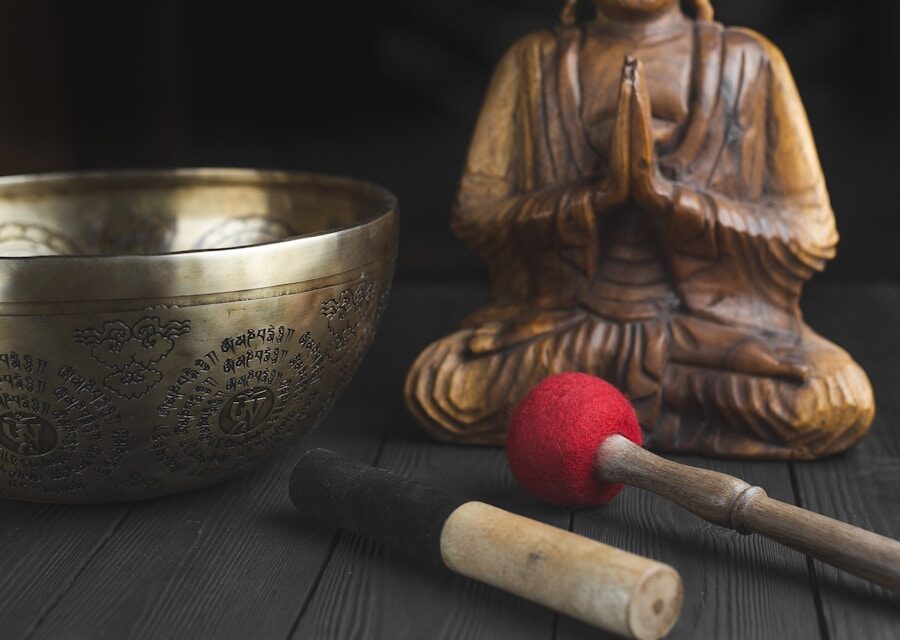Art therapy is a form of therapy that utilizes the creative process of making art to improve mental, emotional, and physical well-being. It has gained popularity in recent years as an alternative form of therapy for those who may not respond well to traditional talk therapy. Art therapy provides individuals with a safe and non-judgmental space to express themselves, explore their emotions, and find healing through the creative process.
Traditional talk therapy may not be effective for everyone, as some individuals may struggle to articulate their thoughts and feelings verbally. Art therapy offers an alternative avenue for self-expression, allowing individuals to communicate and process their experiences through visual art. This can be particularly beneficial for individuals who have experienced trauma or have difficulty verbalizing their emotions.
Art Therapy: A Guided Path to Emotional Recovery
Art therapy differs from traditional art-making in that it is guided by a trained art therapist who helps clients navigate the creative process. The art therapist provides support, encouragement, and guidance throughout the session, helping clients explore their emotions and gain insight into their experiences. The focus is not on creating a masterpiece but on the process of creating and the emotions that arise during that process.
Art therapy techniques can vary depending on the individual’s needs and goals. Some common techniques include drawing, painting, collage-making, and sculpting. These techniques can help individuals express their emotions, gain self-awareness, and develop coping skills. For example, drawing or painting can provide a visual representation of one’s emotions, allowing for a deeper understanding and exploration of those feelings.
Mindfulness Art: Focusing on the Present Moment
Mindfulness is the practice of being fully present in the moment and non-judgmentally aware of one’s thoughts, feelings, and sensations. Incorporating mindfulness into art therapy can enhance the therapeutic benefits by helping individuals focus on the present moment and cultivate a sense of calm and relaxation.
Art can be a powerful tool for mindfulness practice, as it requires individuals to be fully engaged in the creative process. For example, coloring mandalas or engaging in repetitive patterns can help individuals focus their attention and quiet their minds. This can be particularly beneficial for individuals who struggle with anxiety or have difficulty staying present.
Expressive Art: Unleashing Your Creativity to Heal
Creativity is an essential aspect of mental health treatment, as it allows individuals to tap into their emotions and express themselves in a non-verbal way. Expressive art techniques encourage individuals to let go of expectations and explore their creativity freely.
Expressive art techniques can include intuitive painting, spontaneous drawing, or collage-making. These techniques allow individuals to tap into their subconscious mind and access emotions that may be difficult to express verbally. By engaging in the creative process without judgment or preconceived notions, individuals can gain insight into their emotions and experiences.
Narrative Art: Telling Your Story Through Images
Storytelling is a powerful tool in mental health treatment, as it allows individuals to process their experiences and emotions in a structured and meaningful way. Narrative art techniques involve creating visual representations of one’s story or personal narrative.
For example, individuals may create a series of images that depict significant events or milestones in their lives. This process can help individuals gain a sense of control over their narrative and find meaning in their experiences. It can also provide a platform for reflection and self-discovery.
Movement Art: Using the Body to Release Emotions
The mind-body connection is an integral part of mental health treatment, as emotions are often stored in the body. Movement art techniques involve using the body to express emotions and release pent-up energy.
Examples of movement art techniques include dance therapy, yoga, or even simply engaging in free-form movement while creating art. These techniques can help individuals connect with their bodies, release emotions, and promote a sense of well-being. Movement art can be particularly beneficial for individuals who struggle with somatic symptoms or have difficulty accessing and expressing their emotions.
The Science Behind Art Therapy: How It Affects the Brain
Research has shown that art therapy can have a profound impact on the brain, promoting healing and well-being. Engaging in the creative process activates various regions of the brain, including those involved in emotion regulation, self-expression, and problem-solving.
Studies have shown that art therapy can help rewire neural pathways and promote new connections in the brain. This can lead to improved emotional regulation, increased self-awareness, and enhanced overall mental health. For example, a study published in the Journal of the American Art Therapy Association found that art therapy was effective in reducing symptoms of depression and anxiety in adults.
Choosing the Right Art Technique for Your Needs
Choosing the right art technique for each individual’s needs is crucial to ensure a positive therapeutic experience. It is important to consider personal preferences, therapeutic goals, and comfort levels when selecting an art technique.
Some individuals may prefer more structured techniques, such as coloring or collage-making, while others may thrive in more open-ended approaches like intuitive painting or sculpture. It is also important to consider the individual’s comfort level with certain materials or mediums. For example, some individuals may find working with clay to be soothing and grounding, while others may prefer the fluidity of watercolors.
The Benefits of Incorporating Art in Your Mental Health Journey
Incorporating art therapy into one’s mental health journey can offer numerous benefits. Art therapy provides a safe and non-judgmental space for self-expression, allowing individuals to explore their emotions and gain insight into their experiences. It can help individuals develop coping skills, improve self-esteem, and enhance overall well-being.
Art therapy can also complement traditional talk therapy and medication by providing an additional avenue for healing and self-discovery. It can be particularly beneficial for individuals who struggle with verbal expression or have difficulty accessing and processing their emotions. Art therapy offers a unique and creative approach to mental health treatment that can be tailored to each individual’s needs and preferences.
Overcoming Stigma: Art as a Valid Form of Therapy
Despite its growing popularity, art therapy still faces stigma as an alternative form of therapy. Many people may view art therapy as a recreational activity rather than a valid and effective form of treatment. It is important to challenge these misconceptions and recognize the power of art therapy in promoting healing and personal growth.
Art therapy is grounded in research and has been shown to have positive effects on mental health. It provides individuals with a unique and creative outlet for self-expression, allowing them to explore their emotions and experiences in a non-verbal way. By embracing art therapy as a valid form of therapy, we can expand the options available for mental health treatment and provide individuals with alternative paths to healing.
Embracing the Healing Power of Art
Art therapy is a powerful tool for healing and personal growth. It offers individuals a safe and non-judgmental space to explore their emotions, express themselves, and gain insight into their experiences. By incorporating art therapy into their mental health journey, individuals can tap into their creativity, develop coping skills, and enhance overall well-being.
It is important to recognize the potential of art therapy as a complement to traditional talk therapy and medication. Art therapy provides an alternative avenue for self-expression and healing, particularly for those who may struggle with verbal expression or have difficulty accessing their emotions. By embracing the healing power of art, we can expand the options available for mental health treatment and provide individuals with the support they need to thrive.
Find out how Torongo Therapyplus can help you with your needs. Get in touch with us at smile@torongo.life, or call us on 02 8809 9965.






























